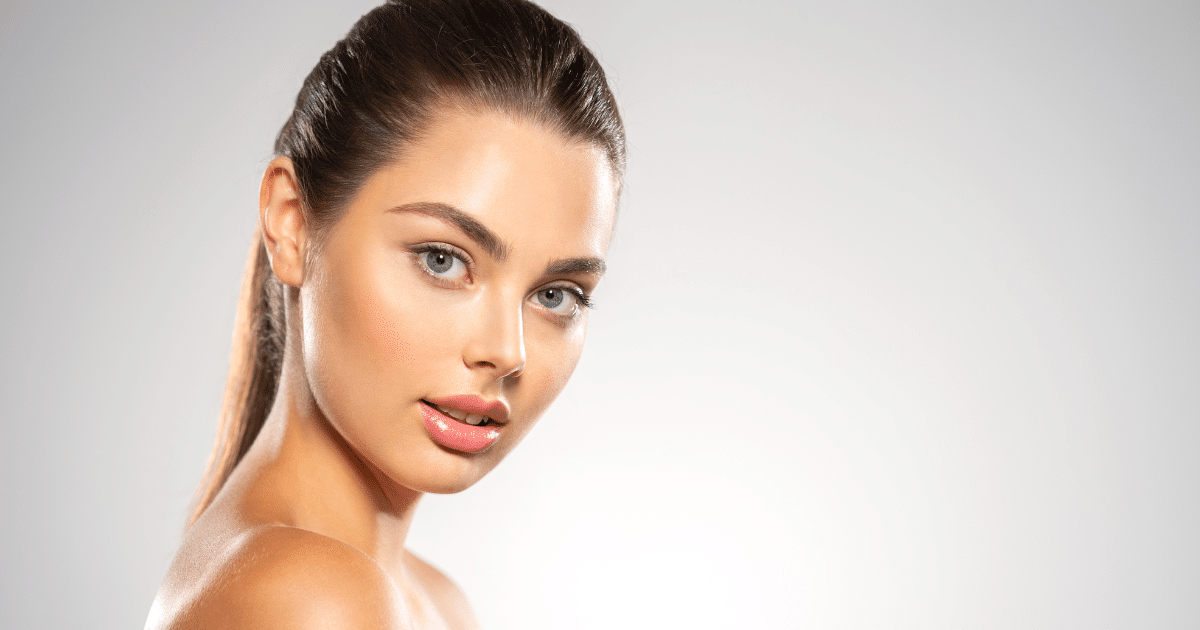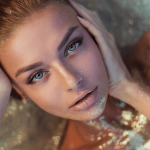
Skin rejuvenation encompasses a variety of treatments that address common signs of aging. It can also reduce sun damage and get rid of damaged older cells sitting on the skin’s surface. Photofacials and microneedling are two popular skin rejuvenation treatments. The former uses pulses of laser light to target hyperpigmentation. The latter uses ultra-thin needles to penetrate the skin and stimulate collagen production. Both treatments also help to boost skin laxity and reduce wrinkles and other signs of aging.
If you’re considering scheduling a skin rejuvenation procedure, you may wonder which of the above treatments to choose. They both help boost the skin’s appearance and combat signs of aging. But they go about these goals in very different ways. Here’s what to know about photofacial vs microneedling procedures and how to choose between them.
How Photofacials Work
There are three main types of photofacials. They are Light-emitting diode (LED), intense pulsed light (IPL™), and broad-based light (BBL). LED photofacials use blue or red light to stimulate collagen production in the skin. They also destroy bacteria that can cause acne breakouts. Finally, LED photofacials can minimize the appearance of fine lines and wrinkles on the face.
Red and blue light, such as the type used in LED photofacials, is part of sunlight. But unlike sunlight, an LED photofacial won’t expose you to harmful ultraviolet radiation. This is important to know because UV radiation can damage skin and cause premature aging. LED photofacials, on the other hand, are gentle and appropriate for people with early signs of aging.
IPL photofacials provide more dramatic treatment results because they penetrate the skin deeper. They use intense light pulses to target age spots, sun spots, and other common signs of aging. The light energy addresses a variety of skin issues, from hyperpigmentation to wrinkles and fine lines. The intense light causes controlled injuries that stimulate the skin’s healing response. As a result, blood flow in the injured area increases. The newly repaired skin looks more beautiful, and vibrant.
BBL photofacials use light energy to regenerate the skin. Like an IPL photofacial, the BBL photofacial corrects sun damage, reduces wrinkles, and improves skin texture. But it also uses state-of-the-art technology to cool the skin during treatment. This helps improve patient comfort. Another way a BBL photofacial is superior to other types is in how deeply it penetrates. Broad-based light energy goes deeper into the skin than other types, helping it to target pigment-producing cells.
Regular photofacials may help slow down or even temporarily reverse the signs of premature skin aging. Photofacials are popular because they deliver good results and are noninvasive. But before choosing between photofacial vs microneedling treatment, it’s wise to learn as much as you can about both options.
How Microneedling Works
Microneedling is a popular cosmetic procedure that has a long history of effective use. It involves intentionally creating micro-injuries in the skin using very small, sterilized needles. The micro-punctures trigger the skin to heal itself. In the process, it removes the damaged cells and replaces them with healthier, more youthful-looking cells. It also ramps up its production of elastin and collagen, which are essential for skin laxity and firmness.
Microneedling is a versatile skin rejuvenation procedure. It can address many different skin concerns, such as scars, fine lines, and hyperpigmentation. It can also improve skin tone and texture. It remains one of the most popular non-surgical facial rejuvenation treatments available.
Photofacial vs Microneedling: Benefits
When comparing the benefits of photofacial and microneedling, you’ll see there are many similarities. However, there are also a few differences. Wondering which treatment is the right fit for you? Review and compare the benefits listed below.
Photofacial Benefits
- Minimizes fine lines and wrinkles
- Tightens skin pores
- Reduces hyperpigmentation from sun exposure and aging skin
- Smooths and improves skin texture
- Minimizes the appearance of blemishes
- Provides deep skin rejuvenation with little to no downtime
- Treatments are quick and convenient
- Non-invasive alternative to surgical treatments
- There are no needles, sutures, or incisions involved
Microneedling Benefits
- Increases collagen production
- Reduces sun spots, age spots, and other types of hyperpigmentation
- Smooths uneven skin tone
- Reduces fine lines and wrinkles
- Tightens skin pores
- Improves skin elasticity
- Reduces the appearance of acne
- Treatments are quick and effective
- There is minimal downtime after treatment
- There are no stitches or scalpels involved
As you can see, it’s hard to go wrong when choosing between photofacial vs microneedling treatments. They are both effective, complexion-improving treatments. They are also both minimally invasive and can rejuvenate your skin with minimal downtime.
Photofacial vs Microneedling: Side Effects
Anytime you undergo an aesthetic procedure, there’s a risk of side effects. However, the side effects associated with photofacial and microneedling treatments are typically mild.
Photofacial Side Effects
Here are some of the most common side effects associated with photofacial treatments:
- Mild swelling
- Temporary skin redness
- Itchiness
- A mild sunburn sensation
- Flaky skin
If you experience any of these symptoms, don’t panic. They should resolve themselves within a few hours or a few days. They should also stay limited to the treatment area. Your provider may advise you to apply a cold compress to the area to alleviate discomfort.
Though rare, it’s also possible for photofacials to cause skin blisters and discoloration. In some cases, the discoloration could be permanent. People with darker skin tones are at a higher risk of experiencing discoloration from photofacials. There’s also a small risk of skin wounds and infections. If you experience these rare complications, contact your provider immediately.
Microneedling Side Effects
When comparing photofacial vs microneedling, it’s important to consider the side effects associated with each. Microneedling is a low-risk aesthetic treatment. However, it can cause some side effects that range in severity. Minor side effects include:
- Mild bruising around the treatment site
- Skin irritation
- Temporary redness, dryness, or itchiness
- Swelling
- Pinpoint scabbing or bleeding
The above symptoms should go away on their own within 48 hours. If they don’t, reach out to your provider. They may be able to give you advice for speeding up the healing process.
It’s rare to experience serious side effects from microneedling. But if they do occur, they might include nausea, fever, hives, or infection. Be careful when selecting a provider to reduce your risk of serious complications. An inexperienced provider may not know how to perform the treatment correctly. They could do something wrong and increase your risk of complications. However, a skilled provider can help you get the best treatment benefits with minimal side effects.
What to Expect During Your Photofacial Treatment
The treatment processes for photofacial vs microneedling are quite different. During a photofacial, your provider will direct a handheld device across your face. As the device emits broad-spectrum light, you will feel increasing warmth in the treated area. However, you shouldn’t feel pain at any point. If the treatment ever feels uncomfortable, ask your provider to adjust the device’s settings.
After your appointment, you’ll need to protect your sun with sunscreen and avoid exposure to sunlight. Your skin will be unusually sensitive to sun exposure. You should also follow the post-procedural instructions your provider gives you. Doing so will help you get the best treatment results and avoid irritating your highly sensitive skin.
What to Expect During Your Microneedling Treatment
During your microneedling procedure, your provider will carefully cleanse impurities from your skin. Then, they’ll apply a topical numbing agent to the treatment site. This will help ensure your comfort throughout the procedure. Once the area is sufficiently numb, your provider gently uses a dermaroller to puncture the skin. They may sweep the device in different directions over the same area to ensure good coverage.
After treatment, your skin will likely look red and sunburned. It may also be sensitive to the touch. Avoid wearing makeup while you allow the treated area to heal. Follow all other post-procedure instructions as given by your provider.
Who’s a Good Candidate for a Photofacial vs Microneedling?
People with freckles, wrinkles, and sun-damaged skin are generally good candidates for photofacials. However, people with dark skin tones should consult with a professional first. A skilled photofacial provider can tell you if this is the right treatment.
You may be a good candidate for microneedling if you want to reduce wrinkles and fine lines. Microneedling can’t make wrinkles go away. But it can minimize their appearance and soften the skin. This treatment can also boost collagen levels and reduce the appearance of scars. Finally, if you have an uneven skin tone or too much redness, microneedling may be ideal. It can provide a smoother skin texture and even out the color of your complexion.
Request a Comprehensive Skin Treatment Consultation
It’s hard to determine which treatment is better between photofacial vs microneedling. They are both highly popular skin rejuvenation treatments that deliver stunning results. If you’re struggling to figure out which one is the better option for you, call New Beauty and Wellness at 203-720-6673.
We’ll help you schedule a consultation at your earliest convenience. During your consultation, we can analyze your skin type and learn more about your specific skin concerns. Then, we’ll recommend a photofacial, microneedling, or other treatments to help you reach your beauty goals.
SCHEDULE A FREE CONSULTATION
Schedule by phone 203-883-5112 or online below
By submitting this form you agree to be contacted via phone/text/email.



